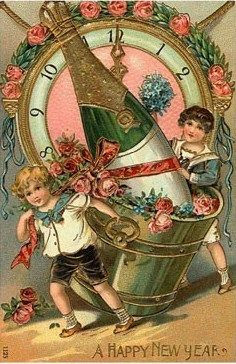 QUESTION: I’ve been collecting postcards for years. Recently, while searching eBay for cards to add to my collection, I came across a unique card depicting Abraham Lincoln’s Emancipation Proclamation. I’ve never really pursued cards from particular presidents and would love to know more about this card and perhaps others. What can you tell me about it?
QUESTION: I’ve been collecting postcards for years. Recently, while searching eBay for cards to add to my collection, I came across a unique card depicting Abraham Lincoln’s Emancipation Proclamation. I’ve never really pursued cards from particular presidents and would love to know more about this card and perhaps others. What can you tell me about it?
ANSWER: The New York City postcard publishing firm of E. Nash published a series of cards issued for Lincoln's Centennial celebration in 1909, of which this one was a part. The six-postcard “Lincoln Birthday Series” was specifically intended as a “Lincoln Centennial Souvenir.” A pattern of stars and stripes form the background of each card, the American flag and eagle figure prominently, and each includes a portrait of President Lincoln and a quotation from or text about him. Four of the postcards depict Lincoln the rail splitter, Lincoln the Great Emancipator, Lincoln at Gettysburg, and Lincoln delivering his Second Inaugural Address. The final two postcards in the series focus on Lincoln’s character. He was “a man of sorrow and acquainted with grief,” as illustrated by his letter to Mrs. Bixby. And he was a man whose “zeal and personal worth” allowed him to rise from his “humble origins” to the “highest pinnacle of fame…as the Champion of Liberty.”
 |
| E. Nash Postcard Set (above and below) |

Avid postcard collectors seek anything concerning Lincoln and bearing his name, even local view cards. Topics range from Lincoln Park in Chicago to a view of Lincoln Drive in Philadelphia's Fairmount Park, and even include hotels bearing the famous Lincoln name.
 |
| Lincoln Portrait |
Less than two generations after his death, Abraham Lincoln emerged as one of America's most heroic legends. As the turn of the 20th century dawned, Americans were caught up in the fad of picture postcard ex-changing and saving. So, it is not surprising to discover how fond the public was of cards honoring the 16th president. Indeed, Lincoln's Birthday became a national holiday, and sending patriotic greeting postcards on the day was an enduring custom for many years.
Along with Uncle Sam, Santa Claus and George Washington, Abraham Lincoln's image and life soon dominated American postcard publishing. Old cards of Lincoln help us to understand just a little bit about the optimism and joy people felt back then. It was a time when Americans, under President Teddy Roosevelt and William H. Taft, felt a surging patriotism and veneration for our country and its past. There was a feeling of security in the present and an anticipation of the future.
 |
| Typical Lincoln Birthday Card |
The London-based company of Raphael Tuck Si Sons printed and exported into this country, a six card set. While attractive, it does not fully measure up to Tuck's usual standard. The series showed vignettes from Lincoln's life, as well as his birthplace and statue. For the serious collector one version of this set came glazed.
MW Taggart of New York City sold a 11-card set featuring scenes not commonly available elsewhere. These included The Lincoln Family Group," "Lincoln and Douglas Debate in 1858," and "Abraham Lincoln Entering Richmond:" A unique touch was added by the inclusion of the assassination scene at Ford's Theater.
 |
| Lincoln Postcard Set by Paul Finkenrath |
 |
| Lincoln Postcard for Minnesota Prairie |
In 1909, the centennial year of Lincoln's birth, proved beneficial to postcard publishers, who cashed in on the public's devotion to the slain president. It was also celebrated by a pair of special postcards sets, both of which undoubtedly were sold as packaged, complete sets throughout America in the hundreds of postcard shops that dotted the landscape.
E. Nash Company published one of the centennial sets, as stated above. The other set, by Fred C. Lounsbury, had four cards, all of which featured an imitation silver and bronze medallion of Lincoln. Scenes pictured included Lincoln's Kentucky birthplace, young Lincoln splitting rails, and the president delivering the Gettysburg Address. Lounsbury also issued these as plain-back souvenirs.
 |
| Lincoln Postcard Set by Fred Lounsbury |
 |
| Postcard Showing Lincoln's Funeral Train |
In 1909 a photograph of Lincoln's funeral train, long lost and forgotten in the home of the Lamson family of Toledo, Ohio, was discovered and used for a postcard design. As a promotional for the Lamson Brothers Department Store, it was handed out to Union veterans attending the 42nd National Encampment of the G.A.R. in Toledo that year.
There are so many Lincoln postcards on the market—over 7,000 have been identified from 1,000 publishers— that its impossible to collect them all. Currently, prices range from a couple of dollars each to about $10, making the postcards one of the best Lincoln memorabilia bargains around.
To read more articles on antiques, please visit the Antiques Articles section of my Web site. And to stay up to the minute on antiques and collectibles, please join the over 30,000 readers by following my free online magazine, #TheAntiquesAlmanac. Learn more about "Celebrating an Olde Fashioned Holiday" in the 2020 Holiday Edition, online now. And to read daily posts about unique objects from the past and their histories, like the #Antiques and More Collection on Facebook.

































